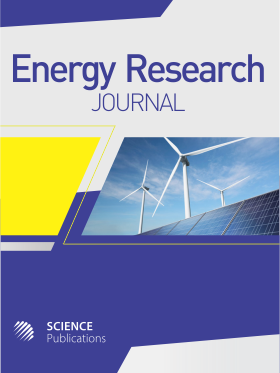The Thermo-Economics Analysis of the Optimum Thickness of Double-Layer Insulation for Air Conditioning Duct
- 1 Silpakorn University, Thailand
Abstract
Problem statement: Engineering economics played an important role in engineering design works. The net saving value was the easiest criterion to indicate the optimum design. However, the information about the net saving analysis of double-layer insulation of air conditioning duct was insufficient. Thus, it was important to study this case. Approach: The optimum thickness analysis of air conditioning duct’s insulation, which composes of the layer of rubber and fiber glass insulator, was conducted by means of thermo-economics method. In addition, the effects of heat transfer coefficient at inside and outside of duct on the optimum thickness of these insulators were also studied. The research was done by considering the insulation’s optimum thickness of circular galvanized steel duct. The duct diameter of 0.5 m with rubber insulator (k = 0.035 W m-1 K-1) and fiber glass insulator (k = 0.045 W m-1 K-1) was selected to show the study results. In order to study the change in optimum thickness when convective heat transfer coefficients were varied, the inside and outside duct convective heat transfer coefficient of 6, 10, 14, 18 and 22 W m-2 Km in diameter and the inside and outside convective heat transfer coefficient of 6 and 22 W were selected for calculation of optimum thickness. Results: The results showed that the variation of inside and outside duct’s heat transfer coefficient did not affect on the insulator’s optimum thickness. In the case of a circular duct of 0.5 m in diameter and the inside and outside convective heat transfer coefficient of 6 and 22 W m-2 K-1 respectively, the optimum thickness was 0.0032 and 0.125 m for rubber and fiber glass insulator respectively. The net saving was 34,173.00 Baht per meter of duct. Conclusion: Finally, when the consideration in terms of insulator cost was done, the thermo-economics analysis of optimum thickness of double-layer insulation was recommended when the cost of main insulator was higher than that of auxiliary insulator otherwise the thermo-economics analysis of optimum thickness of single-layer insulation was sufficient. In addition, the variation of inside and outside duct convective heat transfer coefficient did not affect the optimum thickness. But net saving increased when inside and outside duct convective heat transfer coefficient increased.
DOI: https://doi.org/10.3844/erjsp.2010.146.151

- 4,122 Views
- 3,467 Downloads
- 18 Citations
Download
Keywords
- Thermo-economics
- optimum thickness
- duct insulation
- net saving
